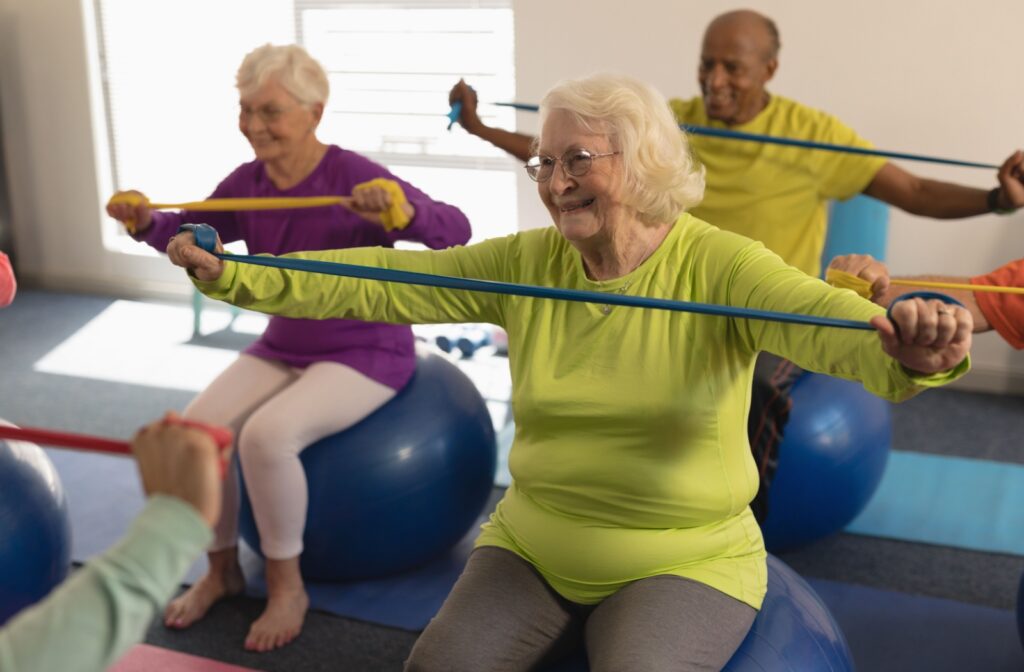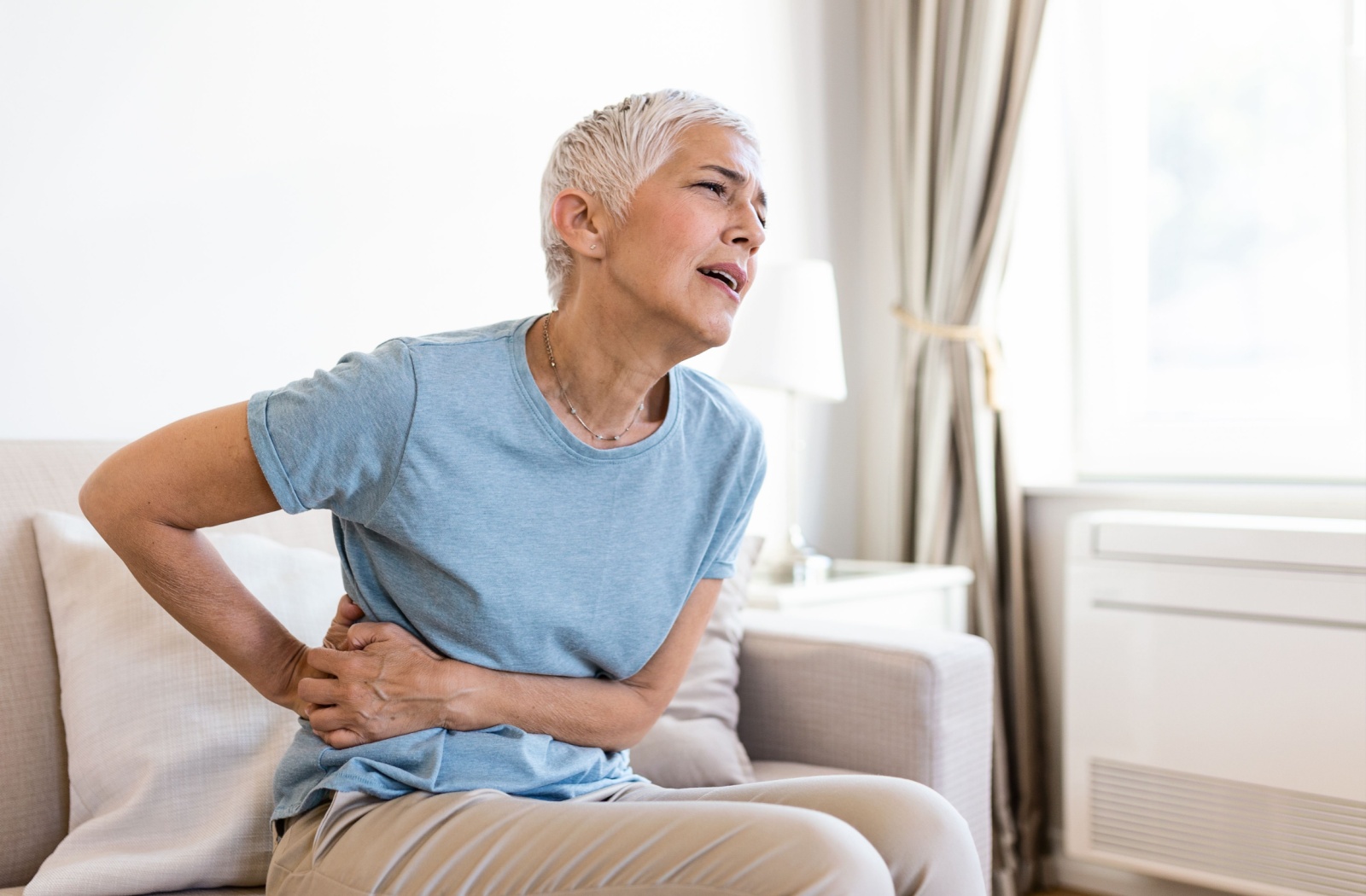Osteoporosis is a condition that weakens bones, making them more fragile and prone to fractures. As people age, their risk of developing osteoporosis increases, which can lead to discomfort, mobility issues, and a higher chance of injury. One of the common concerns among older adults is whether osteoporosis causes hip pain.
While osteoporosis itself does not always cause pain, it can contribute to hip discomfort due to weakened bones, fractures, and changes in posture or movement patterns. Understanding how osteoporosis affects the hips, recognizing the warning signs, and exploring treatment options can help individuals maintain mobility and improve their quality of life.
What Is Osteoporosis?
Osteoporosis is a condition that weakens bones, making them fragile and more prone to fractures. It occurs when bone loss outpaces bone formation, reducing bone density over time. Since bones naturally regenerate, osteoporosis disrupts this process, leading to structural weakness.
Causes and Risk Factors
- Aging: bone density declines with age, especially after 50
- Hormonal changes: estrogen loss in women and testosterone decline in men accelerate bone loss
- Genetics: family history increases the likelihood of developing osteoporosis
- Nutritional deficiencies: low calcium and vitamin D weaken bones
- Sedentary lifestyle: lack of weight-bearing exercise reduces bone strength
- Smoking and alcohol use: both interfere with bone formation
- Chronic conditions: disorders like arthritis and thyroid disease can contribute to bone loss
Symptoms of Osteoporosis
Often called a “silent disease”, osteoporosis typically has no symptoms until a fracture occurs. Signs may include:
- Gradual loss of height
- Stooped posture
- Fragile bones prone to fractures
- Back or hip pain from compression fractures
Early detection through bone density tests can help prevent fractures and maintain bone health.
How Osteoporosis Affects the Hips
The hips are a weight-bearing joint that supports movement, balance, and daily activities. When osteoporosis weakens the bones, the hip joint becomes more vulnerable to fractures, which can be painful and significantly impact mobility. The femur, or thigh bone, connects to the pelvis at the hip joint and is one of the areas commonly affected by osteoporosis-related fractures.
Osteoporosis can also contribute to hip pain indirectly by:
- Reducing bone density, making the hip joint less stable
- Increasing the risk of stress fractures in the femur
- Causing postural changes that put a strain on the hip joint
- Leading to muscle weakness, which affects joint support and movement
Does Osteoporosis Itself Cause Pain?
In its early stages, osteoporosis does not typically cause pain because bone loss occurs gradually and without obvious symptoms. Many people are unaware they have osteoporosis until they experience a fracture. However, as bone density decreases, the risk of fractures increases, and these injuries can be very painful.
Hip fractures are among serious osteoporosis-related injuries, often requiring surgery and extensive rehabilitation. Even small fractures in the hip region, known as stress fractures, can cause discomfort and limit mobility.
Signs of Osteoporosis-Related Hip Problems
Osteoporosis can lead to pain and discomfort in the hips, particularly if fractures or structural changes develop. Some signs that osteoporosis may be affecting the hips include:
- Aching or tenderness in the hip region, especially after standing or walking for extended periods
- Sudden, sharp pain that may indicate a stress fracture
- Difficulty moving the hip joint or reduced range of motion
- Increased discomfort when bearing weight on one leg
- Pain that worsens with activity and improves with rest
If hip pain is persistent or interferes with daily activities, consult a healthcare provider for a proper evaluation.

Preventing Hip Pain & Fractures
Maintaining strong bones is key to preventing hip pain and fractures caused by osteoporosis. A combination of nutrition, exercise, and lifestyle adjustments can help support bone health and reduce the risk of injury.
Calcium & Vitamin D Intake
Calcium is needed for maintaining bone density, while vitamin D helps the body absorb calcium. Foods rich in calcium include:
- Dairy products like milk, yogurt, and cheese
- Leafy green vegetables such as kale and spinach
- Fortified foods like cereals and plant-based milk
- Almonds, sesame seeds, and tofu
Vitamin D is found in:
- Fatty fish like salmon and mackerel
- Egg yolks
- Fortified dairy and non-dairy products
- Sunlight exposure, which helps the body produce vitamin D naturally
Weight-Bearing Exercises
Regular physical activity helps strengthen bones and muscles, reducing the risk of fractures. Beneficial exercises include:
- Walking: a low-impact exercise that promotes bone health
- Resistance training: using weights or resistance bands to build muscle strength
- Tai chi or yoga: improves balance and flexibility, reducing the risk of falls
- Stair climbing: engages the hip muscles and supports bone density
Fall Prevention Strategies
Since osteoporosis increases the risk of fractures, preventing falls is of the utmost importance. Tips to reduce fall risk include:
- Ensuring good lighting in the home
- Removing tripping hazards like loose rugs and clutter
- Wearing supportive, non-slip shoes
- Using assistive devices if necessary, such as canes or walkers
Medications & Treatments
For individuals diagnosed with osteoporosis, medications may help slow bone loss and improve density. Common treatments include:
- Bisphosphonates: medications that help prevent bone breakdown
- Hormone therapy: sometimes recommended for postmenopausal women
- Bone-building injections: used for severe osteoporosis cases
A healthcare provider can help determine the appropriate treatment plan based on individual health needs.
Managing Hip Pain from Osteoporosis
If osteoporosis has led to hip discomfort or a fracture, there are several strategies to manage pain and improve mobility:
- Physical therapy: strengthening exercises and stretching routines tailored to support the hip joint
- Pain management techniques: heat therapy, gentle massage, and over-the-counter pain relievers as recommended by a doctor
- Assistive devices: walkers or canes to provide stability and reduce stress on the hips
- Proper posture: maintaining good spinal alignment to avoid unnecessary pressure on the hip joint
For those experiencing severe hip pain, consulting a specialist for personalized care is recommended.
When to Seek Medical Help
While mild hip discomfort can sometimes be managed with lifestyle adjustments, certain symptoms indicate the need for medical attention. Seek professional care if you experience:
- Sudden, severe hip pain that does not improve with rest
- Difficulty walking or standing without pain
- Swelling or bruising around the hip joint
- A history of fractures or significant bone loss
Early detection and treatment of osteoporosis-related hip issues can prevent complications and improve long-term mobility.
How Assisted Living Can Help
For individuals with osteoporosis, maintaining mobility and preventing falls is necessary for overall health. Assisted living communities provide:
- Personalized care plans to support bone health and pain management
- Fall prevention measures such as grab bars, well-lit spaces, and mobility assistance
- Physical activity programs designed to improve strength, balance, and flexibility
- Nutritious meal plans with calcium and vitamin D-rich foods to promote bone health
At All American Assisted Living at Warwick, residents receive the care and support they need to stay active and maintain their quality of life. Whether it’s through personalized wellness plans, engaging social activities, or a safe living environment, our community helps seniors live with confidence and independence.If you or a loved one is managing osteoporosis and concerned about hip pain or mobility, contact us or schedule a tour to learn more about how assisted living can provide the support you need.







13 thoughts on “Does Osteoporosis Cause Pain in the Hips?”
Comments are closed.